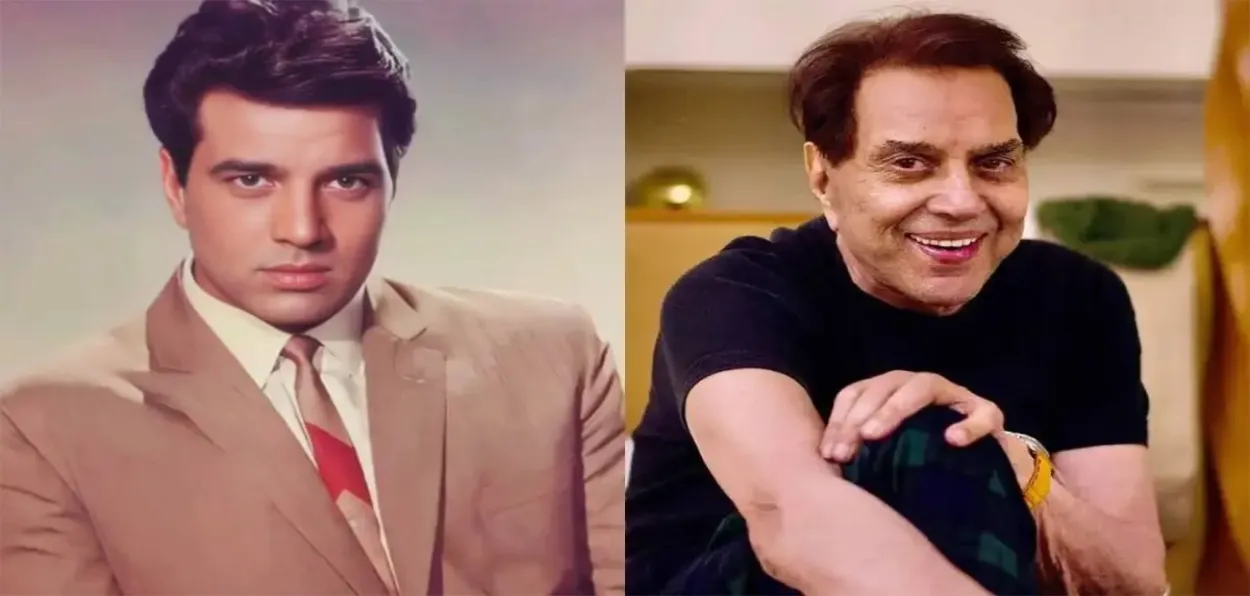
Manjit Thakur
Common cine-goers would often associate Dharmendra, the original ‘He Man’ of Bollywood, with peppy dialogues like "Basanti, inn kutton ke samne mat nachna” (Basanti, don't dance in front of these dogs) from Sholay and Kuttey mein tera Khoon pe jaoaga, not knowing that the 'Macho Man' has also played memorable roles in films where he displayed sensitivity, subtle emotions, and expression and emerged as a fine actor.
The following are some offbeat movies of Dharmendra, who passed away in Mumbai on 24 December at the age of 89.
"Bandini was released in 1963, when Dharmendra’s film career was just taking off.
The prison setting on the banks of the Hooghly River made us realise that "freedom" is not just political, but also mental. In "Bandini," Dharmendra played Dr Devendra, a role that was least expected of him when he was already associated with the "He-Man" tag.
However, he effortlessly portrayed the calm, sensitive, and thoughtful prison doctor. Reviewing the film, a film critic in The Quint later wrote, "A young, charismatic and sensitive prison doctor who doesn't believe in the 'dirty prisoner' narrative... For people of my generation, Dharmendra and jail are the images of him standing on a water tank in Sholay, shouting 'Chakki Picing'. But in Bandini, he is a stunner."
This role demonstrated that Dharmendra could break free from the stereotype of "action-robust" hero.
Another such film in Dharmendra's career was 1966's Anupama. In the film directed by Hrishikesh Mukherjee, Dharmendra played a teacher-poet named Ashok. Ashok displayed a remarkable combination of strength and delicacy. Dr Sneha Krishnan, in her review of the film, wrote, "Dharmendra delivers one of his finest performances in his early career, possessing a caring, inspiring, and endearing screen presence."
His balanced nature as a teacher-poet in Anupama revealed another layer of his acting.
This role was a far cry from his heavyweight cinematic image: no big machine-guns, no slashing action sequences, but a slow-motion sensibility, a story of overcoming cultural shackles. Dharmendra's eyes shone with simplicity and patience, and it was least likely to be expected of the macho man to play at that time.
A list of Dharmendra's offbeat films would be meaningless if one film were not mentioned: Satyakam, released in 1969.
This film is considered a milestone in Dharmendra's acting career. He played an honest engineer named Satyapriya Acharya. For his principles, he clashes with the social fabric, relationships, and system of the time. The Indian Express later cited this film, writing that Dharmendra gave his most authentic performance in Hrishikesh Mukherjee's Satyakam.
Watching this film, you'll notice the depth of his eyes and the fluctuations in his voice. His pauses elevate his acting to new heights.
But in the climax of Satyakam, when Dharmendra's character sees his ideals crumbling—despair, determination, and self-questioning confusion—all three emotions appear simultaneously in his eyes.
It's another matter that the film received rave reviews from critics, but failed to attract the public to the cinema theatres. While it wasn't a box-office success, it's considered Dharmendra's best acting performance.
Dharmendra's other film, Chupke Chupke, was released in 1975.
This film was a departure from the heavy commercial masala. In the comedy-drama with characters whose minds were sharp and yet they were simple persons, Dharmendra played Professor Parimal Tripathi and car driver Pyare Mohan Allahabadi.
The Hindustan Times commented: "A timeless story... and Dharmendra, with his humour and warm energy, gave comedy a new dimension and definition."
The late 1970s were the era of Amitabh Bachchan's explosive action films. But Dharmendra, who defeated Gabbar in this film, won over both Sharmila Tagore and the audience with his smile and simplicity.
In Chupke Chupke, Dharmendra displayed ease in his dialogue delivery, body language, and timing, and the film demonstrated his mastery of his craft as an actor.
But before Chupke Chupke, Dharmendra had another film in 1966,Phool Aur Patthar.
Although this film was a commercial success and is often considered the climax of Dharmendra's rise to superstardom, it can also be considered the beginning of Dharmendra's "off-beat path" as he displayed remarkable sensitivity on screen.
In Phool Aur Patthar, he displayed an acceptance of human frailty while remaining a "hero"—a bold move for the hero image of the time.
Dharmendra was a superstar and remained one until his very end. Undoubtedly, films like Sholay, Loha, Haqeeqat, and Dharam Kanta endeared him to audiences.
Dharmendra demonstrated throughout his career that he was not just a hero, but an actor who would get into the skin of a character to make him look real. This ability made him not just a commercial star but a consummate actor.
ALSO READ: Racing prodigy Rifah Taskeen holds seven records at the age of 15
Satyakam has bid farewell to the world of cinema, but as long as cinema and art are discussed in India, Dharmendra will be remembered for his entire personality, both for his action films and the depth of his art.
